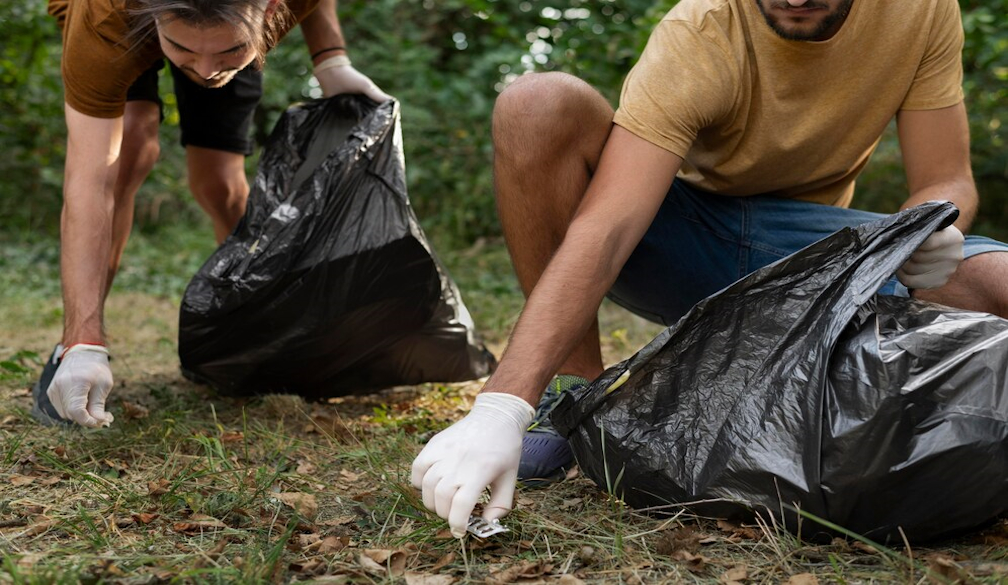What are the best practices for rubbish removal?

Effective rubbish removal is essential for maintaining cleanliness, safety, and environmental responsibility in both residential and commercial settings. Whether you're clearing out clutter from your home or managing waste from a business, following best practices ensures that rubbish is handled efficiently and responsibly. Here are some key practices to consider for effective rubbish removal:
1. Plan Ahead
Assess Your Needs
Before starting the rubbish removal process, assess the volume and types of rubbish you need to dispose of. This includes identifying whether there are any hazardous materials or large items that require special handling.
Schedule Appropriately
Choose a convenient time for rubbish removal that allows you enough time to prepare and coordinate the process. Consider factors such as weather conditions, access to the property, and the availability of rubbish removal services.
2. Sort and Segregate
Categorise Waste
Sort rubbish into different categories such as recyclables, hazardous waste, electronic waste (e-waste), and general waste. This helps streamline the disposal process and ensures that each type of waste is managed according to its specific disposal requirements.
Separate Recyclables
Prioritise recycling by separating materials like paper, cardboard, plastics, glass, and metal from general waste. Many rubbish removal services offer recycling options to minimise landfill waste and promote sustainability.
3. Dispose Responsibly
Follow Local Regulations
Familiarise yourself with local regulations and guidelines for rubbish disposal. Different areas may have specific rules regarding the disposal of hazardous materials, recycling practices, and acceptable types of waste for collection.
Use Authorised Services
Engage reputable rubbish removal services that are licensed and insured. Authorised services ensure compliance with regulations and employ proper disposal methods, reducing environmental impact and legal risks.
4. Ensure Safety
Protective Gear
When handling rubbish, especially items that may be sharp, contain chemicals, or pose health risks, use appropriate protective gear such as gloves, masks, and sturdy footwear. This protects against injuries and exposure to harmful substances.
Safe Handling Practices
Follow safe lifting and handling practices to prevent injuries and property damage. Use equipment like trolleys or dollies for heavy items, and avoid overloading rubbish containers or bags beyond their capacity.
5. Optimise Space and Efficiency
Compact and Bundle
Maximise space efficiency by compacting rubbish where possible and bundling items together. This reduces the number of trips required for disposal and helps control costs associated with rubbish removal services.
Pack Strategically
Pack rubbish containers or bags strategically to prevent spills or leaks during transport. Secure lids tightly on containers and reinforce bags as needed to contain waste securely.
6. Consider Donation and Reuse
Donate Usable Items
Before disposing of items as rubbish, consider donating those that are in good condition to charitable organisations, thrift stores, or community groups. This extends the life cycle of items and benefits those in need.
Repurpose or Recycle
Explore opportunities to repurpose or recycle materials whenever possible. Many items, such as furniture, electronics, and construction materials, can be recycled or repurposed instead of being discarded as rubbish.
7. Evaluate and Improve
Review the Process
After completing rubbish removal, evaluate the effectiveness of your approach. Consider factors such as efficiency, cost-effectiveness, environmental impact, and any challenges encountered during the process.
Seek Feedback
If using a rubbish removal service, provide feedback on your experience to help improve their services. Share insights on areas for improvement or commendations for exemplary service delivery.
Conclusion
Adopting best practices for rubbish removal promotes efficiency, safety, and environmental stewardship. By planning ahead, sorting and segregating waste, disposing responsibly, ensuring safety, optimising space and efficiency, considering donation and reuse options, and evaluating the process for continuous improvement, you can effectively manage rubbish removal tasks. Whether for residential, commercial, or industrial purposes, following these practices ensures that rubbish is handled responsibly and contributes to cleaner, healthier communities.

